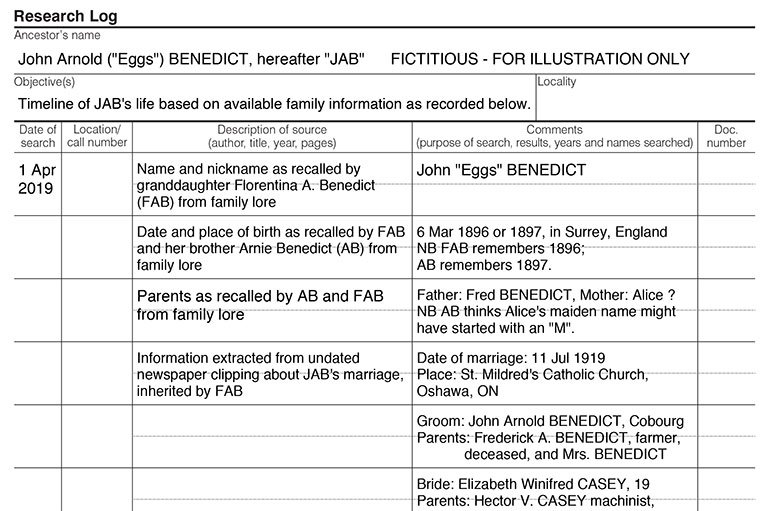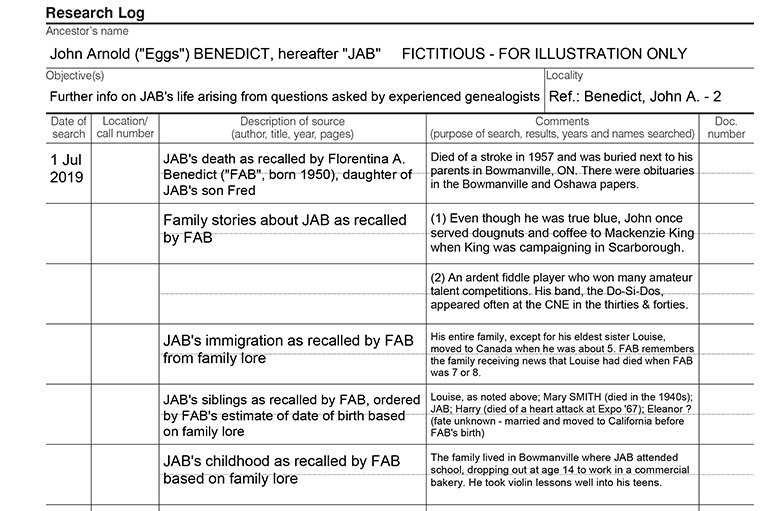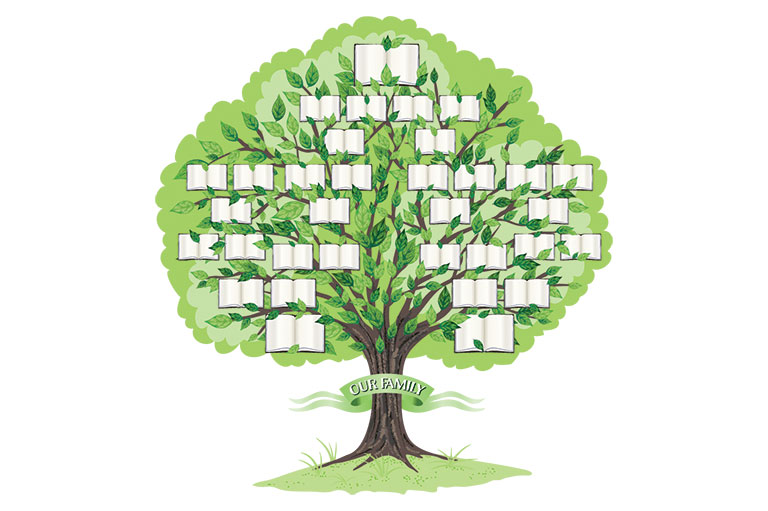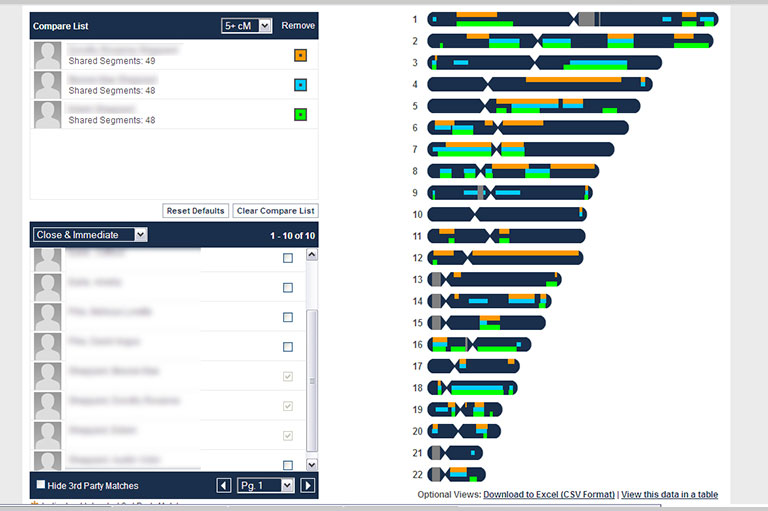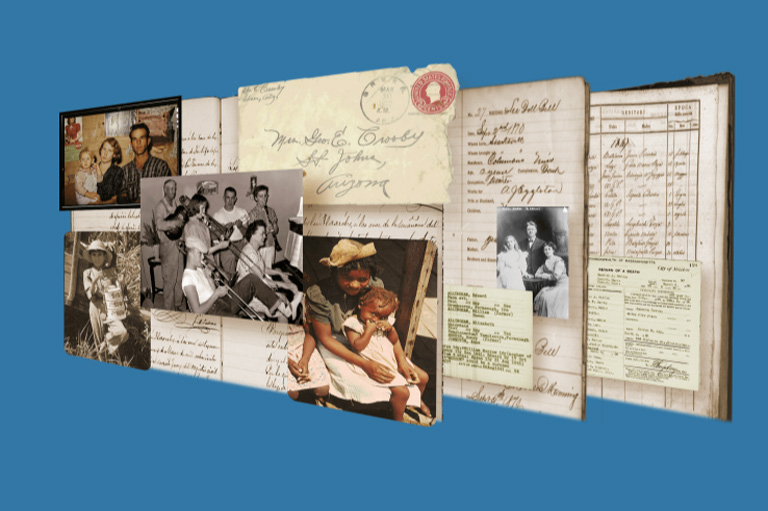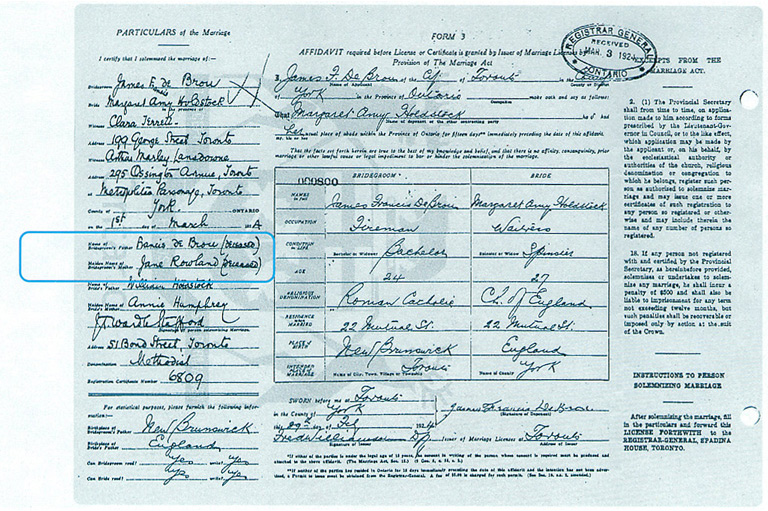Roots: Second Steps for Family Historians
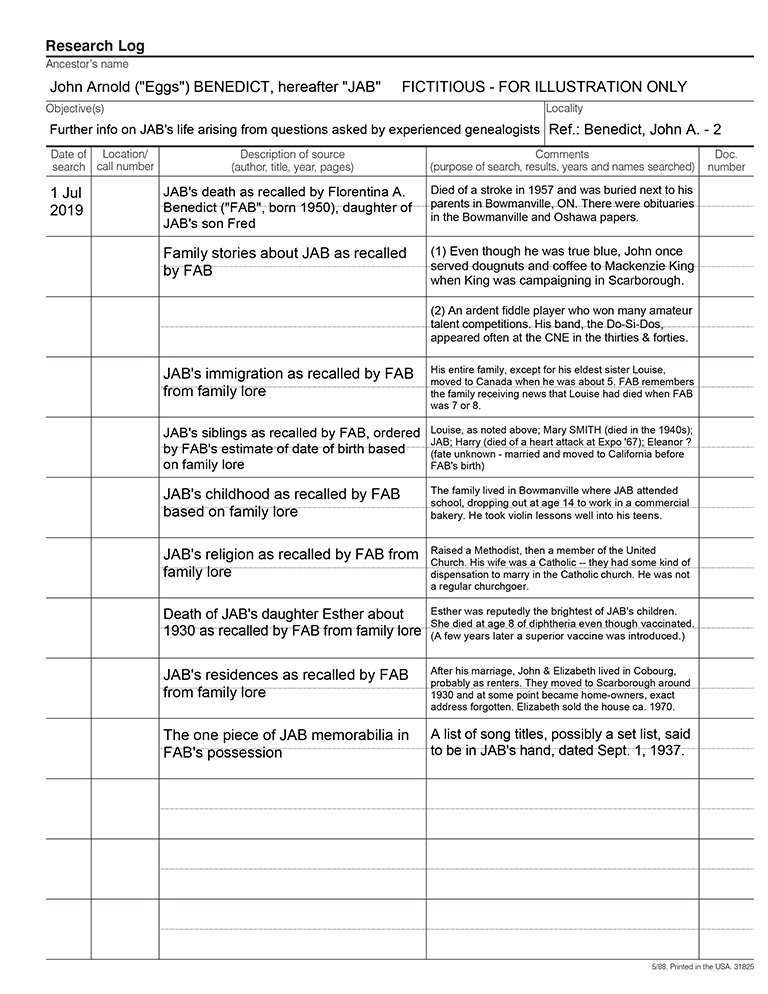
Last time, we learned how to jumpstart research into your family history by filling in an ancestry chart with information available from family lore and documents readily at hand.
You were then tasked with selecting a grandparent and exhausting all family resources for every shred of information about this person — documented facts, doubtful memories, even rumours.
Finally, you met the fictitious but pedagogically helpful John “Eggs” Benedict, whose life I had similarly summarized by assuming the identity of his equally fictitious granddaughter Florentina A. Benedict (hereafter “FAB”).
How did you do on your homework? I can’t see your notes, but I can comment on the information gathered about John by FAB. Perhaps the following critique of her work could also be applied to yours. Here’s what FAB mostly got right, considering the limited information at her disposal:
- She actually took the first step. A tree of a thousand branches begins with a single ancestor.
- She included two of John’s major life events, birth and marriage, but omitted his death. Did you remember to report on all three from your grandparent?
- She recorded what she knew about her grandfather’s parents and children.
- She covered John’s military service and civilian occupations.
- She noted the source of each piece of information, recorded her brother’s memories where they differed from her own, and was not afraid to supply estimates, date ranges, and fragmentary information when that was all she had. Did you hesitate to put something in writing because it might be wrong? Caring about truth is a good instinct for a researcher, but there will be a time for that later. Right now, your goal is to amass all the leads and hints you can.
In other respects, FAB might have done better:
- She did not adequately identify herself. She is John’s granddaughter, but which of John’s children was her parent?
- What about the one surviving member of the previous generation, Uncle Bob in Oshawa? FAB must harvest his memories before the Grim Reaper moves in.
FAB overlooked many facets of John’s life. Perhaps she didn’t think they were important, and maybe they’re not. The thing is, you don’t know what’s important until you see the big picture. For example:
- John was born in England, but when did he emigrate to Canada? Where did he live during his childhood? Where was he educated?
- Did John have siblings? Did some of them stay in the United Kingdom, or did they all come to Canada? Does FAB know anything about these collateral lines of the family?
- In what religion was John raised? What was the significance of his marriage in a Catholic church? Did anyone ever mention his baptism or confirmation?
- Where did John and Elizabeth live? Did they own real estate?
- Was John buried or cremated? Is there a memorial somewhere? What about a published obituary? Did he leave a will that recognized members of his extended family?
- Apart from one newspaper clipping, FAB mentioned no family memorabilia. Someone in the extended family must have a trove of material. Ditto photos.
- And above all, what made John a fully rounded person? Where are the stories of his life? Did he have special skills or enjoy a hobby? Where did he travel? Did he encounter famous people or participate in epochal events? What about clubs and fraternal organizations? John and wife Elizabeth lost eight-year-old daughter Esther — this tragedy must have roiled the family for years.
Now that you’ve read a critique of FAB’s work, you can add newly recalled details to your own grandparent’s life summary. Indeed, it’s time to write up page two of your research findings. To lead by example, FAB has done exactly this in the accompanying chart.
At long last it’s time to break new ground, and to stretch beyond family resources. We need to confirm (or correct) and to build upon all the evidence you’ve amassed. That’s where we’ll head next time.
Family history step-by-step
We hope you’ll help us continue to share fascinating stories about Canada’s past by making a donation to Canada’s History Society today.
We highlight our nation’s diverse past by telling stories that illuminate the people, places, and events that unite us as Canadians, and by making those stories accessible to everyone through our free online content.
We are a registered charity that depends on contributions from readers like you to share inspiring and informative stories with students and citizens of all ages — award-winning stories written by Canada’s top historians, authors, journalists, and history enthusiasts.
Any amount helps, or better yet, start a monthly donation today. Your support makes all the difference. Thank you!
Themes associated with this article
Advertisement
You might also like...

Canada’s History Archive, featuring The Beaver, is now available for your browsing and searching pleasure!
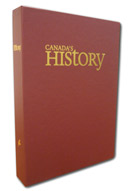
Wouldn’t your magazines like to slip into something more comfortable?
Preserve your collection of back issues with this magazine slipcase beautifully wrapped in burgundy vellum with gold foil stamp on the front and spine. Holds twelve issues.

